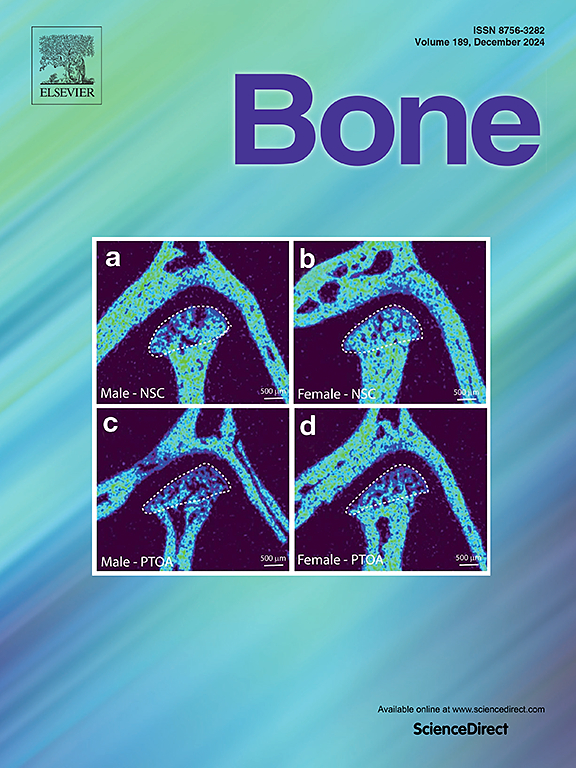Biomarkers and therapeutic targets in giant cell tumor of bone: A comprehensive review
IF 3.6
2区 医学
Q2 ENDOCRINOLOGY & METABOLISM
引用次数: 0
Abstract
Giant cell tumor of bone (GCTB) is an intermediate locally aggressive osteolytic tumor with low metastatic potential and a high recurrence rate. It comprises two main types of cells—neoplastic mononuclear stromal cells and osteoclast-like giant cells—which are responsible for the resorption of bone. In addition to surgery, which is the primary treatment of choice, adjuvant therapy is used to lower the risk of recurrence. However, denosumab, the standard adjuvant treatment currently used, only targets osteoclast-like giant cells and does not affect neoplastic stromal cells. Since some GCTBs are inoperable, or even after surgery, there can be residual tumor cells at the site of the tumor, novel therapies, especially those that target neoplastic stromal cells, are needed. Both cell types in GCTB show altered expression of various specific genes and molecules, and these deregulated molecular profiles could serve as biomarkers and targets for targeted therapy. Herein, we summarize the potential biomarkers for both cell types in GCTB and therapeutic agents targeting these molecules with the hope of finding a therapy with improved outcomes and a lower risk of recurrence.
骨巨细胞瘤的生物标志物和治疗靶点综述
骨巨细胞瘤(GCTB)是一种具有低转移潜力和高复发率的中度局部侵袭性溶骨性肿瘤。它包括两种主要类型的细胞——肿瘤单核基质细胞和破骨细胞样巨细胞——它们负责骨的吸收。除了手术是首选的治疗方法外,辅助治疗也用于降低复发的风险。然而,目前使用的标准辅助治疗denosumab仅针对破骨细胞样巨细胞,不影响肿瘤基质细胞。由于一些GCTBs无法手术,甚至在手术后,肿瘤部位可能存在残留的肿瘤细胞,因此需要新的治疗方法,特别是针对肿瘤基质细胞的治疗方法。GCTB的两种细胞类型都显示出各种特定基因和分子的表达改变,这些失调的分子谱可以作为生物标志物和靶向治疗的靶点。在此,我们总结了GCTB中两种细胞类型的潜在生物标志物和靶向这些分子的治疗药物,希望找到一种改善结果和降低复发风险的治疗方法。
本文章由计算机程序翻译,如有差异,请以英文原文为准。
求助全文
约1分钟内获得全文
求助全文
来源期刊

Bone
医学-内分泌学与代谢
CiteScore
8.90
自引率
4.90%
发文量
264
审稿时长
30 days
期刊介绍:
BONE is an interdisciplinary forum for the rapid publication of original articles and reviews on basic, translational, and clinical aspects of bone and mineral metabolism. The Journal also encourages submissions related to interactions of bone with other organ systems, including cartilage, endocrine, muscle, fat, neural, vascular, gastrointestinal, hematopoietic, and immune systems. Particular attention is placed on the application of experimental studies to clinical practice.
 求助内容:
求助内容: 应助结果提醒方式:
应助结果提醒方式:


